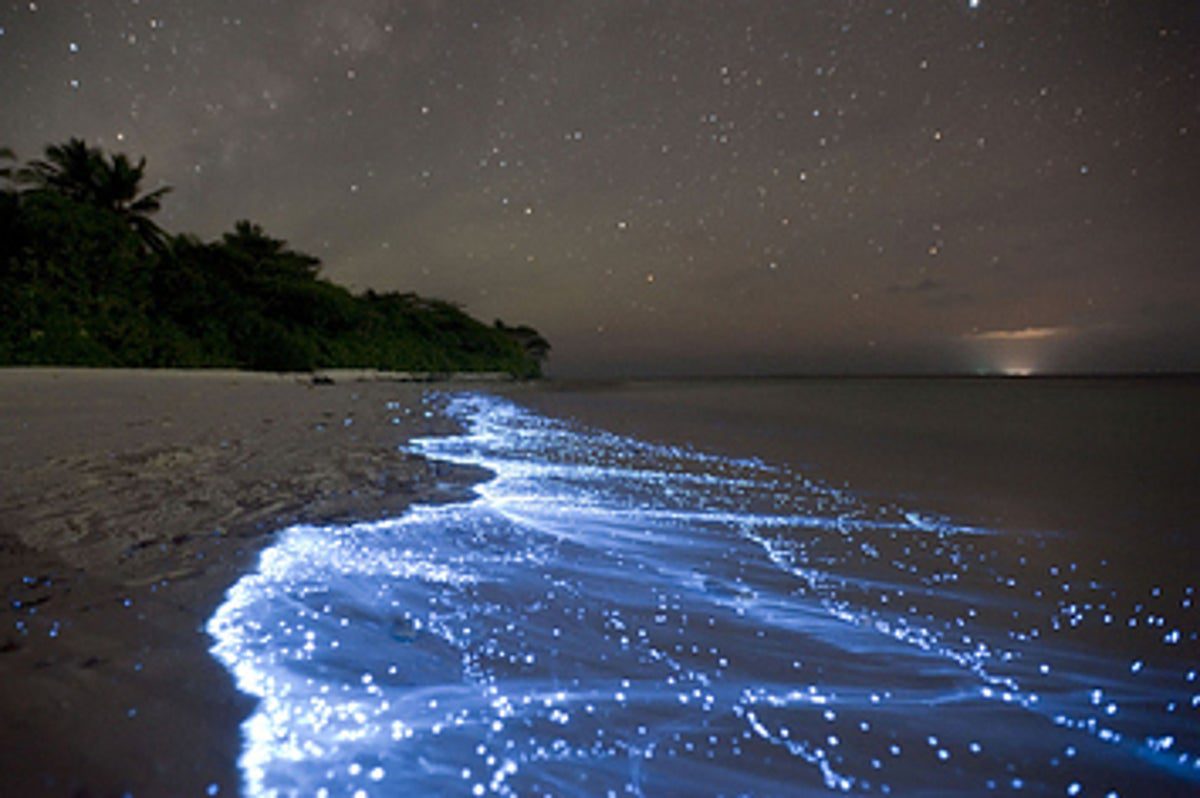From the singing sand dunes to the Blood Falls of Antarctica, the world is full of mysterious and awe-inspiring natural phenomena. Sailing stones in Death Valley, bioluminescent plankton in tropical seas, and underwater crop circles created by pufferfish off the coast of Japan are just a few examples of the wonders that exist on our planet. The constantly flashing Catatumbo lightning in Venezuela, the giant Moeraki Boulders in New Zealand, and the surreal fairy circles in the deserts of Namibia all add to the mystique of Earth’s natural landscapes. Lenticular clouds and the Stone Forest in China round out this list of incredible natural phenomena that continue to captivate and amaze us.
1. Singing sand dunes
Sand dunes are a common sight in many deserts around the world, but some of them have a peculiar property – they “sing.” Known as singing sand dunes, these natural wonders produce a low-frequency humming or booming sound that can be heard from miles away. The exact mechanism behind this phenomenon is not fully understood, but it is believed to be caused by the friction between the sand grains as they shift and slide down the dunes.
2. Blood Falls
Blood Falls is a natural phenomenon in Antarctica where iron-rich water flows out of a glacier and stains the surrounding ice a deep red color, giving it the appearance of blood. The water emerges from beneath the glacier and contains high levels of iron oxide, which gives it its characteristic red hue. Despite its eerie appearance, the water is not actually blood – it is just a natural result of the unique geological conditions in the area.
3. Sailing stones
In Death Valley National Park in California, there is a dry lakebed called Racetrack Playa where large rocks seem to move across the flat surface on their own, leaving long tracks behind them. These moving rocks, known as sailing stones, have puzzled scientists for years. It was eventually discovered that the rocks are moved by a combination of ice and wind, which causes them to slide across the slippery surface of the lakebed.
4. Bioluminescent plankton
In various parts of the world, particularly in tropical seas, there are bioluminescent plankton that emit a dazzling blue or green light when disturbed. This natural light show is caused by a chemical reaction within the plankton’s cells, which produces the glowing effect. When large numbers of these plankton are present in the water, the effect can be quite spectacular, creating a magical underwater display that lights up the night.
5. Underwater crop circles
Off the coast of Japan, there are intricate geometric patterns etched into the sandy ocean floor that resemble crop circles. These mysterious underwater formations are created by a species of pufferfish, which are meticulously designed by the male fish to attract a mate. The fish spends days painstakingly creating these underwater “crop circles” by swimming in circles and flapping its fins to create the patterns, in the hopes of impressing a female and spawning a new generation of pufferfish.
6. Catatumbo lightning
In Venezuela, there is a unique natural phenomenon known as Catatumbo lightning, where lightning strikes occur almost continuously for up to 10 hours a day, 260 days a year. This spectacular light show is caused by a combination of atmospheric conditions, including the warm, moist air from Lake Maracaibo colliding with the cool air from the Andes Mountains. The result is a constant and awe-inspiring display of lightning that has earned the area the nickname “The Everlasting Storm.”
7. Moeraki Boulders
On the coast of New Zealand, there is a beach scattered with giant spherical boulders known as the Moeraki Boulders. These mysterious formations are the result of millions of years of sedimentation and erosion, which have created perfectly round stones that can reach up to 6 feet in diameter. The boulders are a popular tourist attraction and have inspired many legends and myths about their origin and purpose.
8. Lenticular clouds
Lenticular clouds are a type of cloud formation that appears as a lens-shaped cloud hovering in the sky. These clouds are often mistaken for UFOs due to their distinctive shape and smooth, saucer-like appearance. Lenticular clouds are typically formed by strong winds blowing over mountains or other obstacles, which create a series of standing waves in the atmosphere. The clouds form at the crests of these waves, giving them their unique and mesmerizing appearance.
9. Fairy circles
In the deserts of Namibia, there are mysterious circular patches of barren land known as fairy circles. These perfectly round patches range in size from a few feet to hundreds of feet in diameter and are surrounded by lush vegetation. The cause of these fairy circles has been a subject of much debate among scientists, with theories ranging from termite activity to water patterns and plant competition. Regardless of their origin, these fairy circles create a surreal and enchanting landscape in the desert.
10. The Stone Forest
Located in China, the Stone Forest is a vast area of limestone formations that resemble a forest of stone trees. These towering spires and pillars of rock have been sculpted by millions of years of erosion, creating a landscape that is both eerie and mesmerizing. The Stone Forest is a popular tourist attraction and has inspired many legends and myths among the local people about the origins of these fantastical rock formations.
